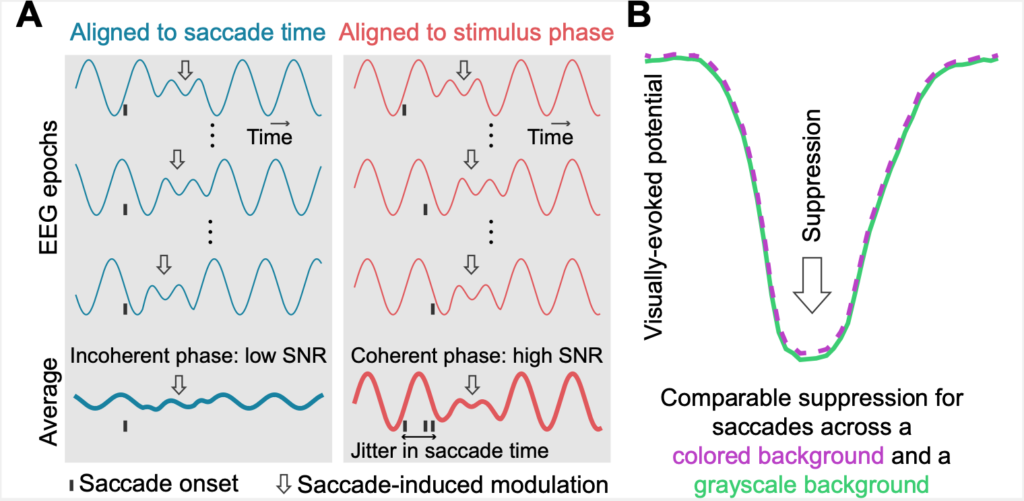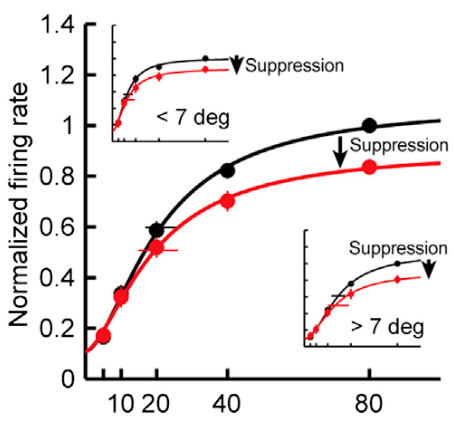We have a new Editorial Focus at the Journal of Neurophysiology, describing our take on a recent paper by Zhang, Valsecchi, Gegenfurtner, and Chen on saccadic suppression.
In their paper, the authors looked at the phenomenon of reduced visual sensitivity around the time of saccadic eye movements. They found that this suppression of visual sensitivity happens equally well for luminance and color contrasts in the human primary visual cortex. This addresses a long-standing debate about how saccadic suppression influences neural activity in the early visual cortex.

The authors also found that saccadic suppression occurs primarily as a response gain modulation, consistent with our earlier results here.

The paper by Zhang and colleagues helps resolve an old discussion about whether saccadic suppression only affects the magnocellular visual pathway (not processing color), or whether it also affects the parvocellular pathway (processing color). This is an important question to resolve, especially because it can help to pinpoint at which stage of brain processing the saccadic suppression actually takes place.
Indeed, there is increasing evidence that saccadic suppression can affect both pathways. For example, we found that saccadic suppression actually starts in the retina itself (here and here). Thus, it should influence both subsequent visual processing streams. More importantly, we also found that one of the key evidences for selective magnocellular pathway suppression (reported about 3 decades ago) can be easily violated with a simple change in visual context. Thus, it is not unreasonable to think that when there’s visual suppression for one, then there’s also visual suppression for all!
Read more about our thoughts on the paper, and stay tuned for even more results from our lab on the intriguing phenomenon of saccadic suppression!
